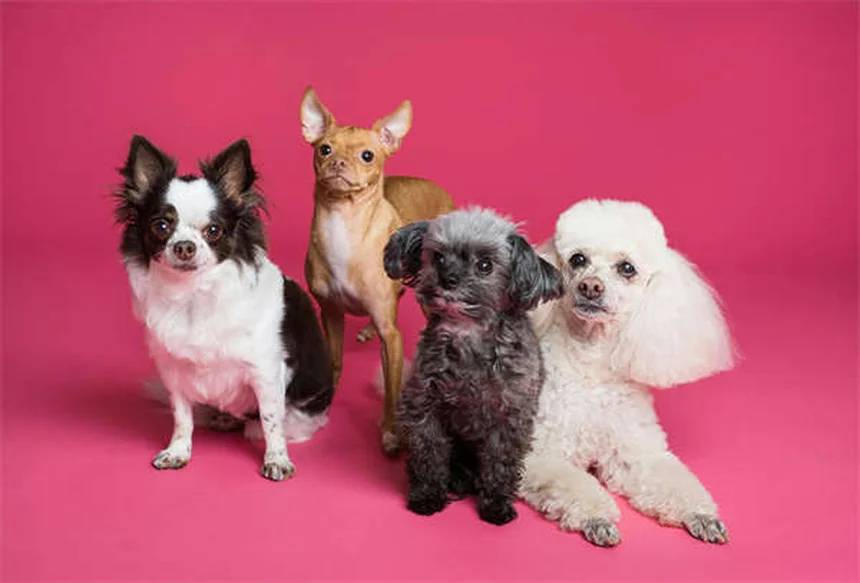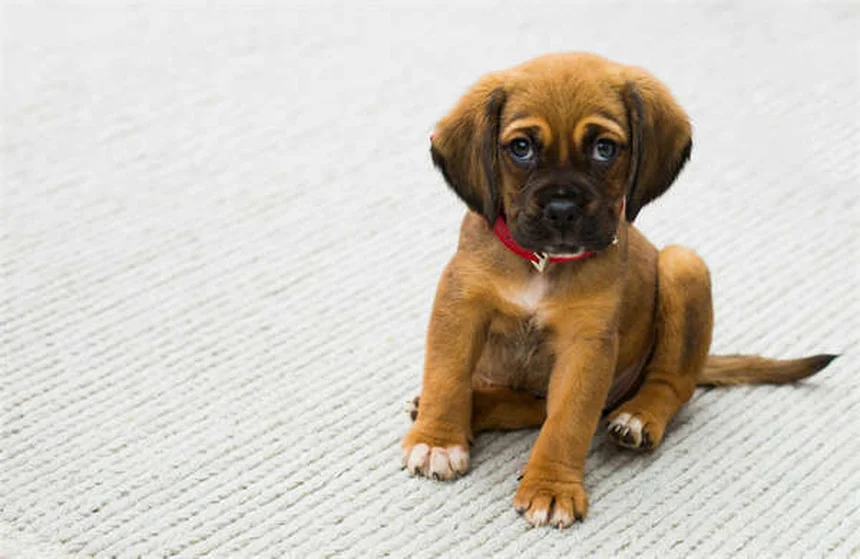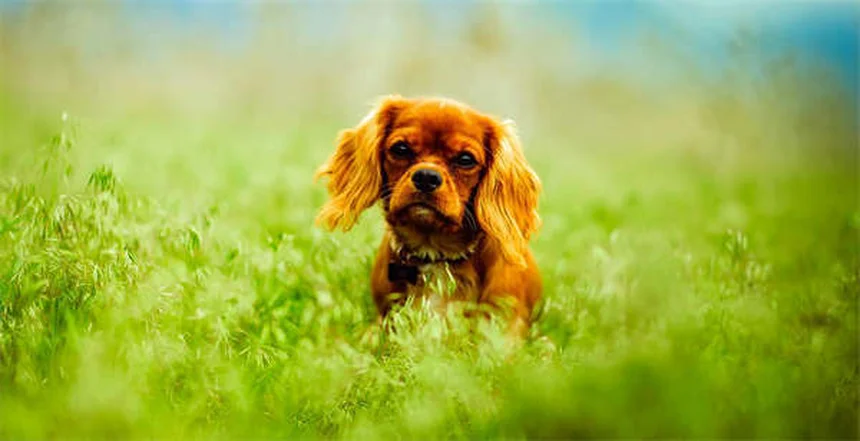Why do chinchillas and guinea pigs popcorn? The answer is simple: they're bursting with happiness! When your furry friend suddenly springs into the air like a kernel of corn popping, it's their way of saying Life is awesome! I've seen my own guinea pig, Biscuit, popcorn so hard he nearly flipped over - and let me tell you, it's the cutest thing you'll ever see.These joyful jumps happen when your pet feels safe, well-fed, and excited. Younger animals tend to popcorn more - my neighbor's chinchilla can jump 3 feet straight up! But here's the thing: not all small pets popcorn, and that's perfectly normal too. Some express happiness through purring, zooming around their cage, or just chilling with you.Want to see more popcorning? We'll share expert tips to encourage this adorable behavior while explaining how to tell happy popcorning from rare fearful jumps. Get ready to become a popcorning pro!
E.g. :Kitten Flea and Tick Prevention: Safe Solutions for Your Furry Friend
- 1、What Does Popcorning Look Like in Chinchillas and Guinea Pigs?
- 2、Why Do These Furry Friends Popcorn?
- 3、Should You Worry About Popcorning?
- 4、The Popcorning Personality Test
- 5、Popcorning vs. Other Rodent Behaviors
- 6、The Social Side of Popcorning
- 7、Popcorning Through the Seasons
- 8、Popcorning and Health
- 9、Training and Popcorning
- 10、FAQs
What Does Popcorning Look Like in Chinchillas and Guinea Pigs?
The Classic Popcorning Move
Picture this: your fluffy little buddy suddenly springs straight up like a kernel of corn popping in a hot pan! That's popcorning in action. Guinea pigs might add some flair by running back and forth first, kicking their legs like tiny rodeo stars. Chinchillas? They go for height - young ones can jump several feet straight up!
Fun fact: My neighbor's chinchilla, Mr. Fluffybutt, once popcorned so high he nearly cleared the coffee table! These bursts of energy often come with happy squeaks from guinea pigs or softer chirps from chinchillas. It's like they're saying "Whee!" in rodent language.
When Do They Do It?
Popcorning can happen anytime - during playtime, when you bring fresh veggies, or just because they feel like it! Younger pets tend to popcorn more, but don't count out the seniors. Our 5-year-old guinea pig, Sir Popalot, still breaks out the moves when he gets his favorite parsley.
| Behavior | Guinea Pig | Chinchilla |
|---|---|---|
| Typical Jump Height | 2-4 inches | 2-3 feet |
| Common Sounds | High-pitched squeaks | Soft chirps |
| Favorite Time | Daytime | Nighttime |
Why Do These Furry Friends Popcorn?
 Photos provided by pixabay
Photos provided by pixabay
The Happiness Factor
Nine times out of ten, popcorning means your pet is bursting with joy. Think about how you might jump for joy when you get great news - same idea! Proper care (fresh food, clean water, playtime) keeps them popcorning regularly.
But here's something interesting: Did you know popcorning can sometimes mean fear? It's true! The key is watching their body language. Happy popcorning comes with relaxed ears and normal squeaks. Scared popcorning? That's when you'll see wide eyes and hear sharp shrieks.
Other Happy Behaviors
Chinchillas have another cool trick called wall-surfing - running up walls when excited! Since they're nocturnal, you might hear more nighttime popcorning. Guinea pigs often "zoom" around their cage when happy too. It's like they're doing laps at the Rodent Olympics!
Should You Worry About Popcorning?
When Popcorning Isn't Popcorning
First-time owners sometimes panic, thinking their pet is having a seizure. But seizures look very different - the animal would lose control, fall over, and twitch violently. Popcorning is always controlled and intentional. Your pet knows exactly what they're doing when they launch into the air!
What if your pet never popcorns? Don't sweat it! Just like not all humans dance when happy, not all rodents popcorn. Some express joy through purring (yes, guinea pigs purr!), relaxed stretching, or simply coming to greet you.
 Photos provided by pixabay
Photos provided by pixabay
The Happiness Factor
Want to see more popcorning? Try these tips:
- Daily playtime outside the cage
- Fresh veggies as occasional treats
- Gentle handling and bonding time
- Clean, spacious living areas
The Popcorning Personality Test
Which Pets Popcorn Most?
Younger animals tend to be the most active popcorning performers. In my experience, guinea pigs under 2 years old and chinchillas under 3 are the most likely to show off their jumping skills. But personality plays a big role too - just like people, some rodents are naturally more expressive than others.
Here's a funny story: My friend has two guinea pigs from the same litter. One, Peppy, popcorns daily. His brother, Chill, has maybe popcorned twice in his life. Same care, completely different personalities!
When Popcorning Changes
As pets age, you might notice less popcorning. This is normal! Their joints aren't as springy, and they've mellowed with maturity. But you can keep them active with:
- Regular exercise opportunities
- Joint-friendly cage setups
- Age-appropriate diet
Popcorning vs. Other Rodent Behaviors
 Photos provided by pixabay
Photos provided by pixabay
The Happiness Factor
While guinea pigs and chinchillas popcorn, other small pets have different happy dances. Rats do the "happy hop" (small bounces while walking). Rabbits perform "binkies" (twisting jumps). Hamsters? They mostly just run really fast on their wheels!
Each species has its own way to say "I'm happy!" Popcorning just happens to be the most dramatic and entertaining to watch. There's nothing quite like seeing your furry friend suddenly rocket into the air for no apparent reason!
The Science Behind the Jump
These amazing jumps come from powerful hind legs designed for quick escapes in the wild. Chinchillas, coming from rocky mountain areas, developed incredible jumping ability to navigate cliffs. Guinea pigs, from open grasslands, evolved quick bursts of speed with smaller jumps. Today, these traits translate into adorable popcorning displays in our homes!
Next time you see your pet popcorn, remember - you're witnessing thousands of years of evolution in action! Well, evolution that now expresses itself through joy at getting a piece of carrot.
The Social Side of Popcorning
Popcorning as Communication
You know what's fascinating? When multiple guinea pigs or chinchillas live together, popcorning often becomes contagious! One starts jumping, and suddenly it's like a furry flash mob. This group behavior shows how these animals use movement to bond with each other - kind of like how humans might dance together at a party.
I've watched my sister's guinea pig trio turn their cage into a popcorn party every afternoon around 3 PM sharp. It's their scheduled happy hour! The dominant pig usually starts first, then the others join in. Sometimes they even popcorn in sync - though more often they bump into each other like tiny, fuzzy bumper cars.
Popcorning for Attention
Ever notice your pet suddenly starts popcorning when you walk into the room? Smart little guys! They quickly learn that this adorable behavior gets them attention (and often treats). My chinchilla Mr. Whiskers has perfected the "look how cute I am" popcorn - he'll do a dramatic leap right against the cage bars when he wants out.
Here's a pro tip: If your pet starts popcorning for attention, try not to reward it every single time. Otherwise you might end up with a furry little manipulator who thinks "If I jump high enough, I'll get unlimited treats!" Not that I'm speaking from experience or anything...
Popcorning Through the Seasons
Temperature Effects on Popcorning
Did you know weather can impact how much your pet popcorns? Chinchillas especially tend to be more active in cooler temperatures - their thick fur makes them prone to overheating. I notice my chinchillas popcorn way more in winter than summer. Guinea pigs? They're happy to popcorn year-round as long as their environment stays between 65-75°F.
| Season | Guinea Pig Activity | Chinchilla Activity |
|---|---|---|
| Summer | Moderate popcorning | Reduced popcorning |
| Winter | Steady popcorning | Increased popcorning |
| Spring/Fall | Peak popcorning | Peak popcorning |
Holiday Popcorning
You won't believe this, but some pets develop seasonal popcorning patterns! My friend's guinea pig Snowball goes absolutely nuts during Christmas - we think it's all the extra activity and new smells in the house. Meanwhile, my chinchillas popcorn extra when we put up Halloween decorations. Maybe they think the fake cobwebs are fun to jump through?
Funny story: Last Thanksgiving, my guinea pig Butterball lived up to his name by popcorning right into a bowl of mashed potatoes. Don't worry - we caught him before he could actually eat any! Now it's a family tradition to keep the guinea pigs safely contained during big meals.
Popcorning and Health
Is Popcorning Good Exercise?
Absolutely! Those explosive jumps give your pet's muscles a great workout. Think of it as their version of HIIT training. Regular popcorning helps maintain healthy weight and strong bones. But here's something important - older or overweight pets might need gentler exercise options to avoid joint stress.
You know what's interesting? Can popcorning ever be dangerous? Rarely, but yes. I once had a chinchilla who popcorned so enthusiastically he knocked over his water bottle. Mostly though, the biggest risk is them startling themselves when they land! The key is providing a safe space without sharp edges or high ledges.
Popcorning After Illness
When a normally active pet stops popcorning, it can be an early warning sign they're not feeling well. But the return of popcorning after sickness? That's the best feeling! My guinea pig Patches didn't popcorn for two weeks after a respiratory infection. The first little hop she did after recovering? I may have cried happy tears.
Vets actually use popcorning as one indicator of recovery progress. It shows the animal has regained energy and feels comfortable enough to express joy again. Just don't expect them to go straight back to Olympic-level jumps - recovery popcorning usually starts small.
Training and Popcorning
Can You Teach a Pet to Popcorn?
Sort of! While you can't force the behavior, you can create situations that encourage it. Try waving a favorite treat just above their head - many will instinctively jump for it. Over time, some pets associate certain cues with popcorning. My neighbor trained her guinea pig to popcorn on command by saying "Jump!" right before treat time.
But let's be real - most of these little guys will popcorn whenever they darn well please. And honestly, that spontaneous joy is half the fun! There's nothing quite like being in the middle of a work Zoom call when your chinchilla decides to launch himself across the room in the background.
Popcorning During Playtime
Out-of-cage time often triggers the most spectacular popcorning displays. All that open space! I like to create mini obstacle courses with cardboard tubes and low platforms to encourage safe jumping. Just last week, my chinchilla did a popcorn-leap-tunnel combo move that would've scored perfect 10s in rodent gymnastics.
Remember to supervise closely during playtime though. We've all had that heart-stopping moment when a particularly enthusiastic popcorn sends your pet flying toward... well, let's just say I now keep breakables far away from play areas!
E.g. :Have You Ever Seen Your Pet Chinchilla or Guinea Pig Popcorning ...
FAQs
Q: Is popcorning in chinchillas and guinea pigs a sign of happiness?
A: Absolutely! In most cases, when your chinchilla or guinea pig starts popping up like corn, it means they're thrilled about life. I've noticed my guinea pigs popcorn most when they get fresh veggies or playtime. Their whole body language screams joy - relaxed ears, bright eyes, and sometimes happy squeaks. But here's a pro tip: watch for context. If they popcorn while making scared noises or right after a loud sound, it might be fear. Still, 90% of the time, it's pure happiness!
Q: How high can chinchillas and guinea pigs jump when popcorning?
A: These little athletes can surprise you! From my experience, guinea pigs typically jump 2-4 inches, while chinchillas? Hold onto your hats - young ones can launch 2-3 feet straight up! I'll never forget when Mr. Fluffington (my friend's chinchilla) nearly cleared a coffee table. The height difference comes from their natural habitats - chinchillas evolved to navigate rocky cliffs, while guinea pigs are grassland sprinters. Older or heavier pets might not jump as high, but their popcorning is just as meaningful!
Q: Should I worry if my pet never popcorns?
A: Don't stress! Just like not all humans dance when happy, not all rodents popcorn. Some of my chillest guinea pigs rarely popcorned but showed happiness in other ways - purring when petted or running to greet me. The key is looking for multiple signs of wellbeing: good appetite, normal activity, and social behavior. If your pet seems healthy and content but just isn't the popcorning type, that's completely normal. They might be the strong, silent type!
Q: Can popcorning be confused with health problems?
A: Great question! First-time owners sometimes mistake popcorning for seizures, but there are clear differences. As a vet tech friend explained to me, popcorning is controlled and intentional - your pet lands on their feet and keeps going. Seizures involve loss of control, falling over, and uncontrolled twitching. Another thing to watch for: if your normally popcorning pet suddenly stops and seems lethargic, that's worth a vet visit. But the happy jumps themselves? Totally normal and healthy!
Q: How can I encourage my pet to popcorn more?
A: Here are proven tips I've used to bring out the popcorning: First, daily playtime outside the cage - nothing gets my guinea pigs popping like exploring new spaces! Second, surprise treats - the crinkle of a veggie bag works magic. Third, gentle bonding - chinchillas often popcorn after a good chin scratch. Lastly, make sure their home is clean and spacious. Remember though - some pets are naturally less expressive, and that's okay too. The goal is their happiness, not performance!







